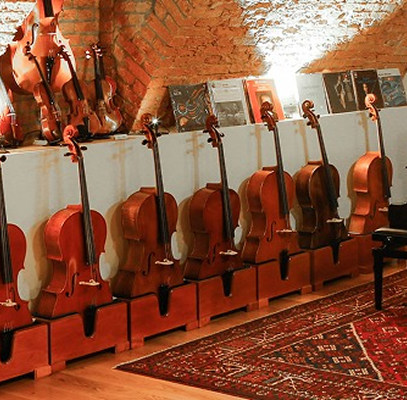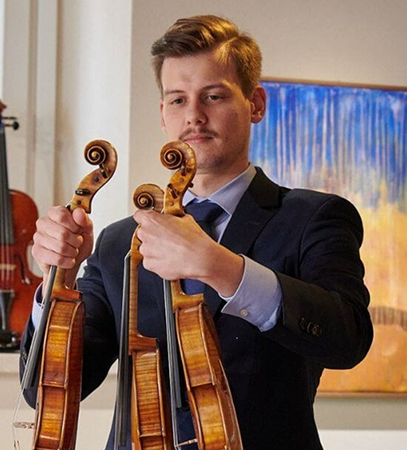Violin Maker
Giovanni Battista Guadagnini
Italy, Milan, Parma, Piacenza, Turin
Born in 1711 in what is now the Province of Piacenza in Northern Italy, Guadagnini's life unfolded across four significant periods. Each one is marked by his residence in Piacenza, Milan, Parma, and Turin.Read more
Short Bio
Full Name: Giovanni Battista Guadagnini
Highlights
New making style: n/a
Credentials
Italian Classic violin-making
Traditional craftsmanship
Highly sougth after by soloists
Great historical value
Locally making
Italy, Milan, Parma, Piacenza, Turin
Maker Background
Giovanni Battista Guadagnini is one of the most prominent figures in the history of Italian violin making. He developed a distinctive violin-making style that evolved through four distinct periods corresponding to his residences in Piacenza, Milan, Parma, and Turin.Piacenza (1740-1749)
Few is known about Guadagnini’s early career and his training, though his membership in the woodworking guild suggests an apprenticeship. Working amid economic hardship and war between Austria and Spain who were fighting for control over the city, he crafted instruments—often with a distinctive reddish-orange varnish—that included smaller cellos, prompting his eventual move to Milan in search of better opportunities.
Milan (1749–1759)
Thanks to Milan's bustling musical environment and wealthy middle class, Guadagnini refined his craft by focusing on precision and aesthetics. His work gained prominence, using selected woods and a bright red varnish, which somehow testifies his desire to address to the refined, tasteful, and wealthy Milanese clientele. Some instruments of this period even bore labels linking them to the Cremonese tradition, despite there is no evidence of him ever residing in Cremona.
Parma (1759–1771)
Seeking improved prospects, Guadagnini relocated to Parma under Spanish rule, where patronage from Duke Filippo di Borbone’s court led to steady work and distinctive stylistic changes. Here, he adopted higher archings, a browner varnish, and used locally sourced maple, reflecting both local material influences and courtly tastes. This flourishing period ended with Filippo di Borbone's death; he was succeeded by a son who lacked his father's enthusiasm for the arts. The new Duke began shutting down all court establishments, and by 1771, it became clear that both Guadagnini and his clientele were facing unemployment.
Turin (1771–1777)
In Turin, its vibrant court and the activities of the prestigious Regio Theatre and Cappella Reale, was a legitimate choice for his new settlement. Here, Guadagnini’s fortunes revived through his association with Ignazio Alessandro Cozio, Count of Salabue. Cozio, aiming to revive Cremonese traditions, influenced Guadagnini to adopt a style more reminiscent of Stradivari’s, a change that is evident in his later instruments. Guadagnini eventually died in Turin in 1786, leaving behind a legacy as one of the last great makers of the classical period.
Throughout his career, Guadagnini consistently utilized local materials and maintained a unique varnishing technique. His evolving style—marked by influences from Cremonese masters and his own innovations—has earned his instruments a celebrated reputation for their tonal quality and playability, inspiring musicians and collectors alike.




